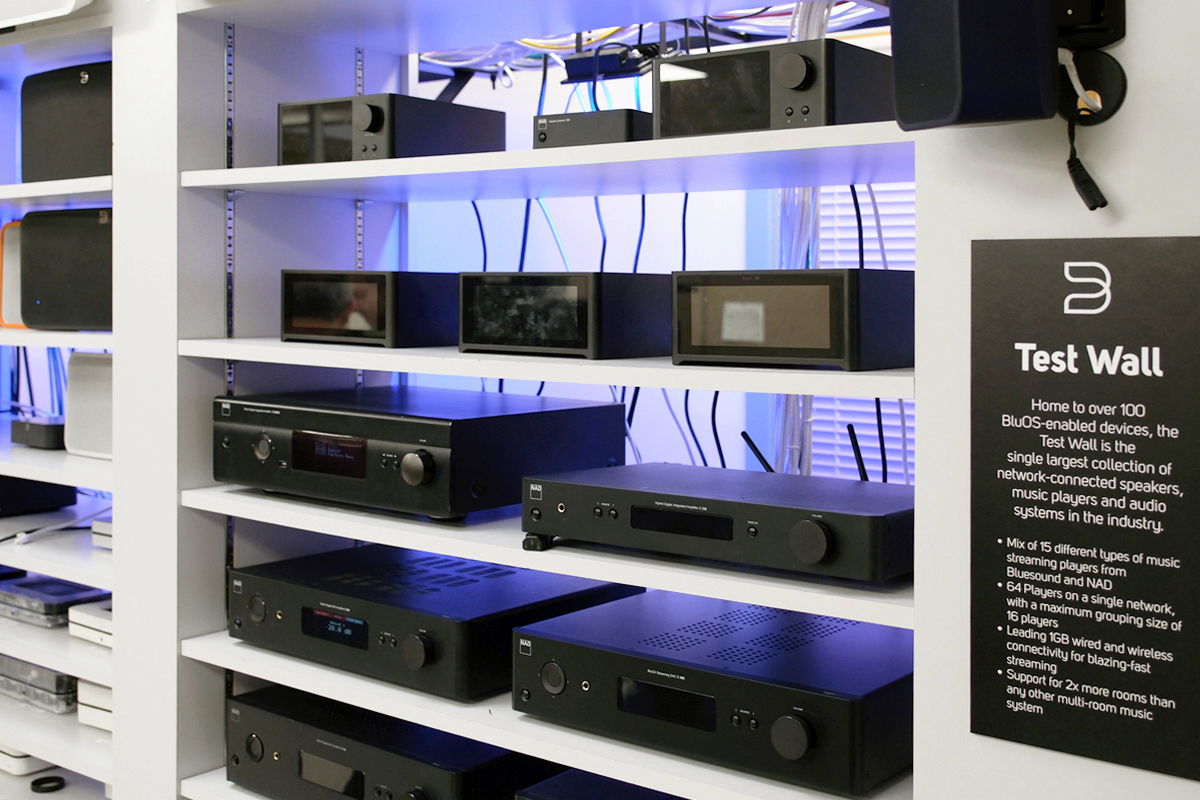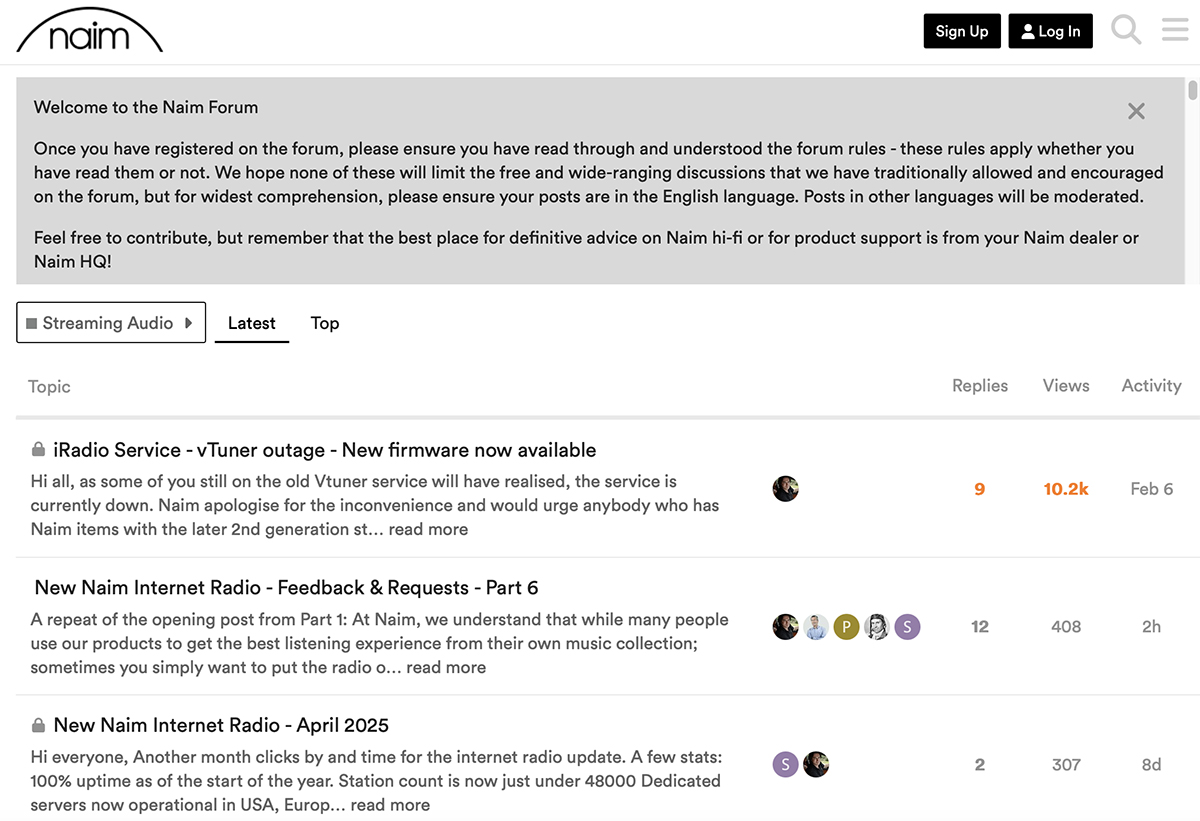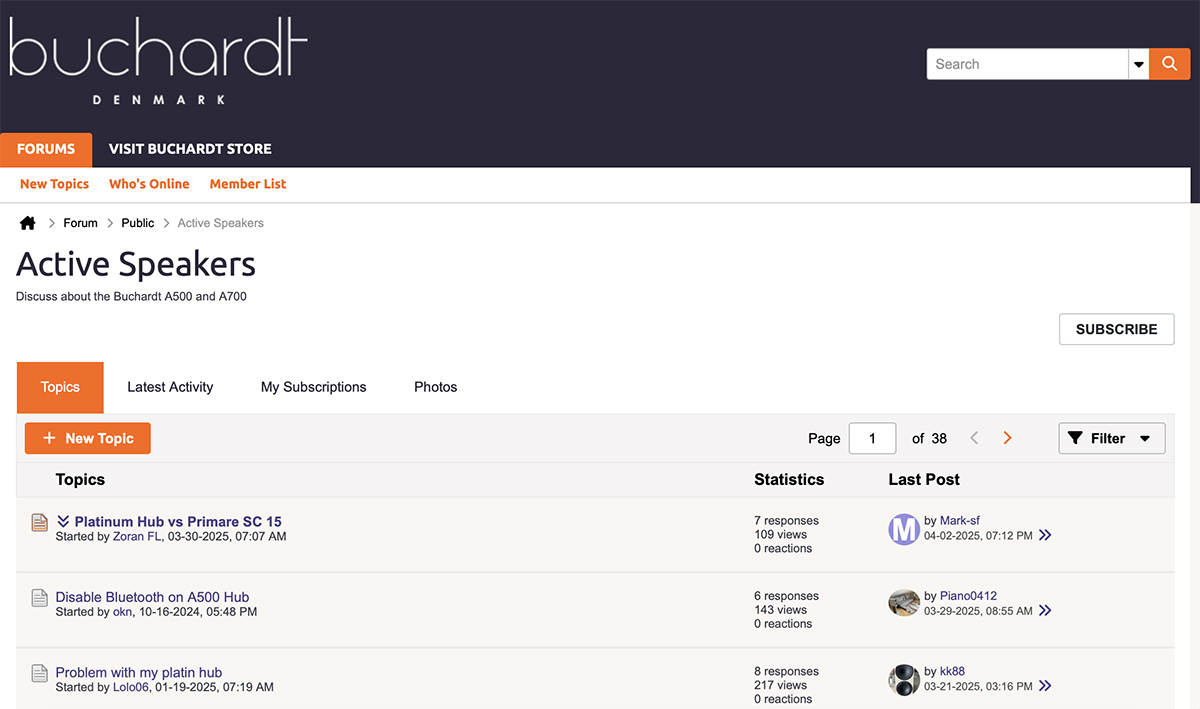Back in 2012, when Canada’s Lenbrook Industries was getting set to launch its Bluesound line of multiroom streaming products, they made a critical hire. Who was that person? A software engineer who could oversee development of the operating system and apps that would underpin the new components? A hardware engineer who could design those components? A marketing director who could create a campaign to drive awareness of the new brand?
The correct answer is none of the above. The new hire was Tony Williamson, who had spent the previous ten years managing IT-service delivery for internal users at the Walt Disney Company before becoming Lenbrook’s product-support manager. “I was the first person Lenbrook hired to work exclusively on Bluesound,” Williamson told me during an interview in early March. “They had just come up with the Bluesound name, and they realized this was going to be much more of a lifestyle brand. With the introduction of apps, it was going to be much more customer-supportive.”
 Tony Williamson, Product Support Manager, Lenbrook
Tony Williamson, Product Support Manager, Lenbrook
If you cast your mind back to that time, it’s easy to understand Lenbrook’s rationale. Bluesound was the company’s first venture into network-based, app-driven streaming components, which at the time were fairly new. Spotify had just launched in the US.
Also, Bluesound was Lenbrook’s first venture into direct-to-consumer sales. True, Bluesound is also sold through third-party retail channels, both bricks-and-mortar and online. But Lenbrook’s other brands—NAD Electronics and PSB Speakers—are sold almost entirely through retail channels, so those brands’ customers can turn to dealers for help.
Support system
Today, Williamson oversees a 20-person team that supports all of Lenbrook’s major brands: not just Bluesound, but NAD and PSB as well. The main job of 16 members of Lenbrook’s support team is to respond to customer inquiries. In addition to hardware-related issues, they handle inquiries related to the BluOS software that underpins all Bluesound devices, streaming components from NAD and PSB, and BluOS-enabled products from licensees like DALI and Roksan. All team members are based at Lenbrook’s head office in Pickering, Ontario.
Some support requests come in via email, others from one of Lenbrook’s toll-free numbers (there are different numbers for consumers and dealers in the US and Canada, and other numbers for international callers). About half of the support requests are made using the BluOS app. In the Settings menu, there’s an option to ask support. “This is our favorite way to get support requests because we get the log file for the device,” Williamson said. That makes it easier and faster for Lenbrook to pinpoint the cause of the user’s problem.
Support issues have changed profoundly since the Bluesound brand was launched, Williamson said. “Back then, we were in the infancy of what the industry now calls the Internet of Things. Since then, we’ve come light years in customers’ understanding of what a router does and why network throughput is important. They understand that the player has the brain and the app just tells it what to do.”

Now, issues are more likely to involve interoperability with other components in customers’ systems—for example, getting the BluOS app to access content on a network-attached storage (NAS) system.
Sometimes, there’s nothing Lenbrook can do to help a customer. Williamson told me about problems users were having when connecting Bluesound players via HDMI-ARC to a specific brand of TV—and just that brand. “We’d tell the customer we’ve looked at this closely, but it’s better if they speak to the TV manufacturer. There’s nothing wrong with our support crew being able to tell the customer, ‘I don’t have the answer, but I know someone who might.’ Because that’s good customer service, right?”
There can also be driver issues with advanced home-control systems from vendors like Control4 and RTI. “We have a pretty robust driver system with these brands, but sometimes we run into problems that have even our senior support crew scratching their heads. They’ll be asking for log files trying to decipher whether the problem is the driver or the way the customer is implementing their system. We’re a premium product, and part of that is that you get premium support.”
Hands-on
It takes four to five weeks before a new support representative is knowledgeable enough to help customers. Part of the process is sending a new hire home with Pulse Mini and Pulse Flex music systems so they can get hands-on experience with BluOS. “We did this early on,” Williamson related. “At the time, we had only two support-crew members. One of our trusted dealers in the US commented that they knew the manual really well, but they sounded like robots.” Having support members who are experienced with the product and the app “creates a better experience for the customer,” he added. “The whole reason for contacting support is because the manual is not making sense to you.”

In addition to the 16 support representatives, Williamson’s team includes two operation leads and a full-time content writer who maintains the online knowledge bases for all of Lenbrook’s consumer brands. Besides keeping the knowledge bases up-to-date, the writer creates documents to help users with new features. For example, when Bluesound introduced its Node Icon streaming preamplifier, the writer adapted an article on using Dirac Live room correction from the NAD support site for Bluesound users. These detailed resources are valuable adjuncts to user manuals. Lenbrook also has lively forums where users can pose questions and share information.
Support interactions and forum discussions influence product development. Last year, Lenbrook released an overhauled version of the BluOS app. One of the big changes in BluOS 4.0 was simplifying the playback queue. “I’d say about 90% of our customers like the way the app works now,” Williamson said. “But about 10% said they missed the ability to add songs and move tracks around while the queue is playing. As much as we’re glad we’ve appealed to that 90%, we’re very interested in that 10%. These are some of our most loyal, most hardcore customers. So later this year, we’re planning to give users the ability to toggle the way they use the queue, whether they just want to tap and replace, or manipulate the queue while it’s playing.”
Across the pond
Naim Audio is also using information gleaned from its user forum and support channels to feed product development. The British brand has an active forum where members discuss music, hi-fi, streaming, and home theater, plus an assortment of general-interest topics. The Naim Forum dates back to the late 1990s, brand ambassador Jason Gould told me during a video call in early April. Naim founder Julian Vereker “had this love of computers,” he explained. “A lot of people think of him as this purist, two-channel, hi-fi guy, which he definitely was. But he loved computers, and he thought it would be really cool to be in touch with people who like music, good hi-fi, and Naim Audio in particular. So he started the forum in that vein.
“Initially, it was mostly Naim enthusiasts,” Gould continued. “But as time progressed, people started to go to the forum for hints and tips—especially since the advent of digital music, and streaming in particular.”
 Jason Gould, Brand Ambassador, Naim Audio
Jason Gould, Brand Ambassador, Naim Audio
Today, the Naim Forum is managed by Richard Dane, once Naim’s export sales manager, who now works freelance from his home in Kent, but commutes to Naim’s headquarters in Salisbury for regular meetings with R&D and sales personnel. Naim also has a tech-support team comprising two people who work internally and three who work from home. “That team always reports to one another about their findings, and they have regular meetings with R&D,” Gould noted.
Those meetings have led to changes in Naim’s streaming components and the Naim app. A few years ago, forum members began chatting about a new streaming service that wasn’t supported by Naim. The streaming card Naim was using at the time supported Tidal, but it did not have enough processing capability to add a client for Qobuz. “We said, there’s something in this, and we had better look into it,” Gould related. “We have to make sure our products have enough capacity to work with new services and enable future upgrades.”
Partly as a result of those exchanges, Naim switched to a different streaming module in its New Classic series. Besides having enough capacity to add more services, the new module supports over-the-air software updates, which greatly simplifies support and upgrades.
Troubleshooting
Naim sells through retail channels, and information gleaned from the Naim Forum and Naim’s support team can be pushed out to dealers so they can help end users. “More and more, incoming calls have to do with networks,” Gould said, “but it’s rarely related to our product. But because our product is the most expensive component connected to the router, people tend to think it’s the product.”
Gould outlined one example. Customers in the UK were complaining that their Naim streamers were disconnecting from their home networks for no reason. It turned out that the problem was the internet router supplied by a well-known telecommunications provider. If the streamer had not been used for 24 hours, the router would reassign its IP address, which meant that users couldn’t find the streamer in their apps.
But people didn’t understand this. “They’d say, ‘It must be the streamer, because my computer still works,’” Gould related. “‘So why is your product dropping off?’ That’s where the forum has been really useful. It’s good that we get those questions raised so we can look into them. Things can get a bit heated at times, but we work things out in the end.”

A little digging revealed that the culprit was the ISP’s router, which led to a simple solution: connect an inexpensive Cisco Wi-Fi router to the one supplied by the ISP. The ISP’s router would act as the internet gateway, while the Cisco router managed the home network. Unlike the ISP’s router, the Cisco router wouldn’t reassign IP addresses after 24 hours, so the Naim streamer would stay connected.
Before new products are released, Naim brings the tech-support team and Dane into headquarters in Salisbury for training meetings so they can be briefed on potential issues. “They’ll be in a boardroom for two or three days so they can get a deep dive, because the last thing you want is your support team getting nasty surprises,” Gould said.
For example, during training sessions for Naim’s New Classic series, support reps learned that a customer connecting an NSS 333 streamer to an NAC 332 preamp using balanced cables would get no sound. “It’s important that tech support know that the machine is set up at the factory to use the DIN connector,” Gould explained. “If you want to use balanced cables, you have to go into the menu and select Balanced.” Thanks to these deep dives, Naim’s support representatives can do this kind of troubleshooting for users.
All hands on deck
On the Naim Forum, it’s not just Richard Dane helping users who are having problems. “He’s got contacts in the building so he doesn’t have to wait until Monday morning to get a response to a customer’s problem,” Gould said. “But maybe someone from R&D isn’t around on the weekend. The one thing people do here is get the right answers rather than making something up.” Sometimes, other users pitch in. “Maybe we’re not around because it’s Saturday evening at midnight, but somebody else drops into the forum, and says, I’m around, and I had a similar issue.”
The same thing happens on the Bluesound Community and other Lenbrook forums. “You’ll get consumer-to-consumer help there because we have five or six long-term Bluesound enthusiasts who monitor the site,” Williamson said. “I’ve spoken to a couple of them offline and told them, ‘Hey, man, thanks for doing my job for me.’”

Naim and Lenbrook are hardly unique among hi-fi brands in offering online resources and tech support for customers. Especially in the streaming era, tech support is a necessity. Denmark’s Buchardt Audio has an active user forum. So does Roon Labs.
Online forums and support lines are a valuable source of information for users, but also for manufacturers. “Our support crew is the most important tool our organization has for hearing from the customer,” Williamson said, “what the customer wants, what the customer is looking for. It helps us make a better product.”
. . . Gordon Brockhouse




